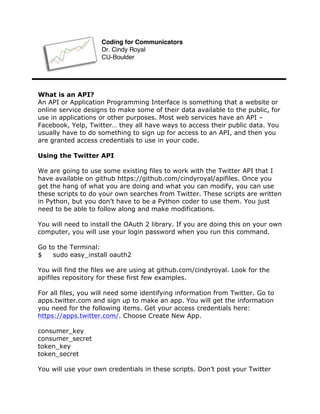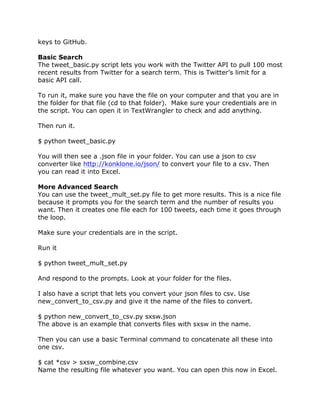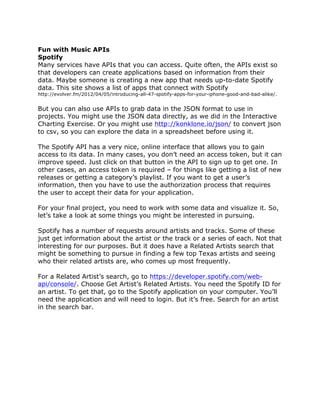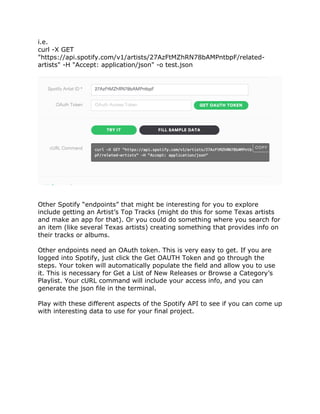An API allows websites and services to make some of their data available to the public for use in applications. The Twitter API allows users to access Twitter data through scripts and programs. This document provides instructions for using existing Python scripts that interface with the Twitter API to search for and retrieve tweets. It also discusses how the Spotify API can be used to access music data like related artists and top tracks of specific artists. Users are encouraged to experiment with different endpoints of the Spotify API to find interesting data for a final project.






